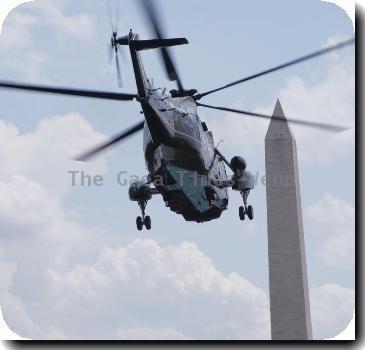CAPITAL CULTURE: Funding for arts, cultural programs spikes in Obama’s first year
By Brett Zongker, APTuesday, December 8, 2009
CAPITAL CULTURE: Obama drops cautious arts policy
WASHINGTON — In his first year, President Barack Obama has marshaled the largest infusion of cultural funding in decades — despite a few stumbles.
Though still far less than arts advocates contend is needed, they have high hopes this president could transform cultural policy, funding and arts education for years to come.
“I think and feel he’s very much in the John F. Kennedy tradition — he embodies the humanities, essentially,” said Jim Leach, a former Republican congressman from Iowa whom Obama named chairman of the National Endowment for the Humanities. “That doesn’t mean a conservative leader can’t also. Abraham Lincoln was a great conservative who embodied the humanities.”
Across Washington, cultural leaders have taken note of Obama’s approach. They’re impressed with the variety of musical performances and workshops held at the White House this year, covering classical, jazz, Latin and country tunes.
There’s also the $100 million in new funding for the arts, including a one-time $50 million infusion from the economic stimulus package to preserve arts jobs. There were sizable increases as well in the annual appropriations for the arts and humanities endowments. Both agencies will receive $167.5 million in 2010, their largest allocations in 16 years.
Arts supporters wanted more money, but they say the increases were significant and symbolic of Obama’s commitment.
“It’s still a relatively small amount of money — a $12.5 million increase (for 2010) spread over 100,000 arts organizations,” said Michael Kaiser, president of the John F. Kennedy Center for the Performing Arts. “But symbolically, it was very important because so many state and local arts agencies are being cut by their state and local governments, so to have the federal government … actually put more into arts, I think was very important.”
Obama’s efforts in the arts ran afoul of critics in August when a National Endowment for the Arts official asked artists to coordinate with the Corporation for Public Service on ways to help bolster Obama’s public service agenda.
“I would encourage you to pick something, whether it’s health care, education, the environment — you know, there’s four key areas that the corporation has identified as the areas of service,” the NEA’s Yosi Sergant told artists on the call. He was reassigned after the call became public and later left the agency.
Critics said it was an overreach at Obama’s NEA, while supporters argued that the episode was overblown. Still, the White House issued an advisory for government agencies to avoid even the appearance of politics playing a role in federal grants.
At a dinner during last weekend’s Kennedy Center Honors, Education Secretary Arne Duncan said improving arts education will be a key element of his proposed changes in former President George W. Bush’s No Child Left Behind law. He said parents, teachers and students all have noticed a “narrowing of the curriculum.”
“I’m convinced when students are engaged in the arts, graduation rates go up, dropout rates go down,” Duncan said.
The Obamas presided over the Kennedy Center Honors, but they also have been frequent guests at Kennedy Center performances and at New York’s museums and theaters.
“Both the president and the first lady have demonstrated an interest in the arts that is more active than most of their predecessors,” said George Stevens Jr., who has produced the Kennedy Center Honors as a national celebration of the arts for the past 32 years. “They’re young and connected to what’s going on in the world, and a part of that is the performing arts.”
Stevens has been enlisted to co-chair the President’s Committee on the Arts and the Humanities. The Obamas also have quietly recruited some of the biggest names in music, architecture, dance and show business to help guide arts initiatives. “Sex and the City” star Sarah Jessica Parker, acclaimed cellist Yo-Yo Ma, and actors Forest Whitaker and Alfre Woodard are among 25 members appointed to the committee.
Other key arts appointments also have broken the mold.
At the NEA, which has been cautiously rebuilding since congressional conservatives slashed funding to less than $100 million in 1996, Obama appointed an outspoken Broadway producer, Rocco Landesman, as the nation’s top arts official.
Landesman has said he would like to resume making grants to individual artists, a longtime practice targeted in the 1990s when conservatives said the NEA was supporting obscene art. He may hold off, though. The NEA’s annual funding has yet to fully rebound to its high of nearly $176 million from 1992.
At the National Endowment for the Humanities, Obama chose Leach, who contends that inadequate consideration of Iraqi cultural issues may have contributed to the march to war in Iraq.
“To shortchange the humanities can be very expensive if you make mistakes based upon not factoring in cultural considerations to policy,” he said.
Leach said arts and humanities programs are most essential in difficult times. As the nation is faced with two wars, a weak economy and a polarizing debate over health care, Leach is conducting a 50-state “civility tour” to promote respectful discourse. He also plans to promote better understanding of foreign cultures.
“I’d point out in a historical way that during the Great Depression we were spending vastly higher percentages of federal resources on the arts and humanities than we do today,” he said. “The public coalesced around the notion that it was important to bring perspective to issues of the day.”
In pressing to restore arts funding, the advocacy group Americans for the Arts has stressed the economic impact of the arts, totaling nearly 6 million nonprofit jobs among 100,000 organizations. That’s up from just 7,000 nonprofit arts groups 50 years ago.
Federal grants helped fuel that growth, said Robert Lynch, president and chief executive of the lobbying group, by leveraging other public support and private funding for the arts. “It’s been so successful over the past 50 years, it’s good business sense for there to be a bigger investment,” Lynch said.
Despite the increased funding this year, it’s too soon to judge Obama’s impact, he said.
Tags: Arts And Entertainment, Barack Obama, Civil Service, Education, Endowments, Labor Issues, North America, Personnel, Philanthropy, Political Organizations, School Curricula, Special Interest Groups, Teaching, United States, Visual Arts, Washington

